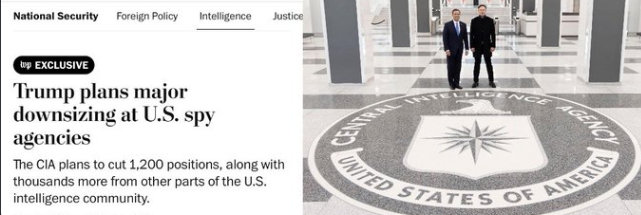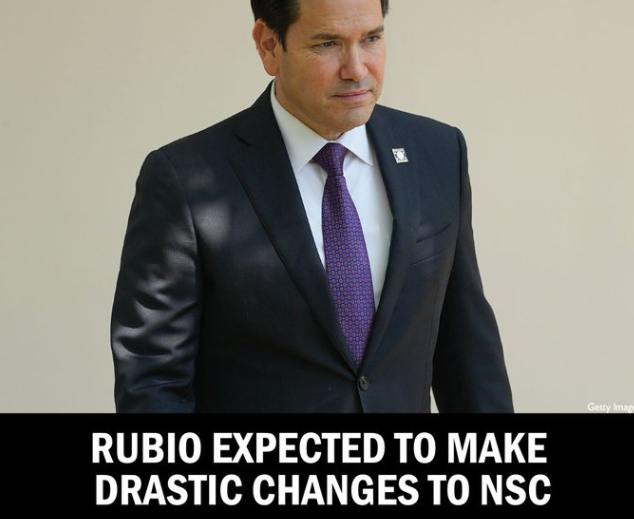🚨 What Just Happened? NSC Downsizing Turns into White House Power Play
NSC Blackout In a political move that’s gripping headlines and rattling the intelligence community, the Trump administration has initiated a sudden downsizing of the National Security Council (NSC). This isn’t just an operational decision—it’s a full-blown strategic overhaul that’s left dozens on administrative leave and reshaped how America approaches internal security.
But this isn’t just about reducing headcount. Below are the 7 key factors that make this moment a historic—and deeply unsettling—turning point for U.S. governance:
🧨 7 Key Factors That Will Define This Controversial NSC Purge
- Political Retaliation in Disguise
Sources say many officials placed on leave held opposing views to Trump’s foreign policy. This move may be more about purging dissent than improving efficiency. - Administrative Leave as a Weapon
Normally reserved for investigations, administrative leave is now being used en masse—without public justification. It’s a silent and efficient method to remove people without formal firings. - Untraceable Intelligence Shifts
With key personnel gone, NSC functions may be outsourced or moved behind closed doors, leaving Americans in the dark. - Zero Congressional Input
Lawmakers were blindsided. No official hearings, no briefings, no transparency. This makes the process seem dangerously unilateral. - Morale Crash Inside the NSC
Sources describe the mood inside the NSC as “paranoid and panicked,” with career officials unsure if they’ll be next. - Opaque Justifications Fuel Distrust
No clear explanations were given for why certain individuals were targeted. The secrecy breeds fear, rumors, and chaos. - Allies on Edge
NATO and EU intelligence partners are watching with concern, questioning whether American intelligence channels remain stable and trustworthy.
🧠 What’s Really Happening? The Trump Administration’s Strategy Unpacked
The official line is that the Trump administration is “streamlining the NSC to cut duplication.” But multiple insiders suggest that the true motive is more sinister: realigning the council to better serve the President’s personal agenda, rather than preserving America’s long-standing institutional security framework.
Ad. leave—an HR tool meant for internal investigations—has now become a political guillotine, silently removing opposing voices from rooms where critical decisions are made.
🕵️♂️ Who’s on Administrative Leave? And Why So Quiet?
Although names remain classified, it’s been reported that over two dozen staffers were placed on ad. leave—some with zero notice.
What’s even more alarming is that many of these individuals had years of service, with roles tied to nuclear protocols, foreign diplomacy, and counterterrorism. Their sudden disappearance leaves a vacuum that cannot be easily filled.
💬 Voices That Matter: Reactions from Across the Political Spectrum
- Senator Kamala Harris called the move “a direct threat to checks and balances.”
- Former CIA analyst Ned Price warned: “Removing dissenters from national security policy weakens our democracy.”
- Fox News described it as “a necessary cleanup of a bloated and outdated institution.”
The internet, meanwhile, has erupted with the hashtag #NSCBlackout, with users speculating on who’s next and what secrets may be buried behind the scenes.

🔍 What Everyone Is Searching Right Now
Q: What is administrative leave in the U.S. government?
A: It’s a temporary suspension with pay, typically used during investigations. In this case, it’s raising eyebrows due to its widespread, unexplained use.
Q: Why did the Trump administration reduce the NSC?
A: Officials claim it was to improve efficiency, but critics argue it was about purging ideological opposition.
Q: How many NSC officials were affected?
A: Estimates suggest 20–30 people were placed on leave or reassigned.
Q: Is it legal to place officials on administrative leave like this?
A: While technically legal, the lack of transparency and due process raises constitutional and ethical questions.
Q: What does this mean for national security?
A: Experts worry it creates gaps in critical intelligence and disrupts foreign policy continuity.
🧨 Why These 7 Key Factors Could Shift the Course of U.S. Foreign Policy Forever
This isn’t just an internal matter. When America’s national security team is restructured overnight, allies and adversaries take notice. The Trump administration’s power move may achieve short-term control, but at what cost?
The real danger lies in setting a precedent. Future administrations may now view ad. leave not as a safeguard—but as a sword.
🌐 Final Thoughts: When Silence Becomes Strategy
Transparency is the cornerstone of democracy. But in this case, silence has become strategy, and ad. leave is the new political exile.
By understanding the 7 key factors in this NSC shake-up, we expose a deeper truth: that sometimes, the greatest threats to democracy aren’t external. They’re internal, institutional—and quietly unfolding behind classified doors.
















